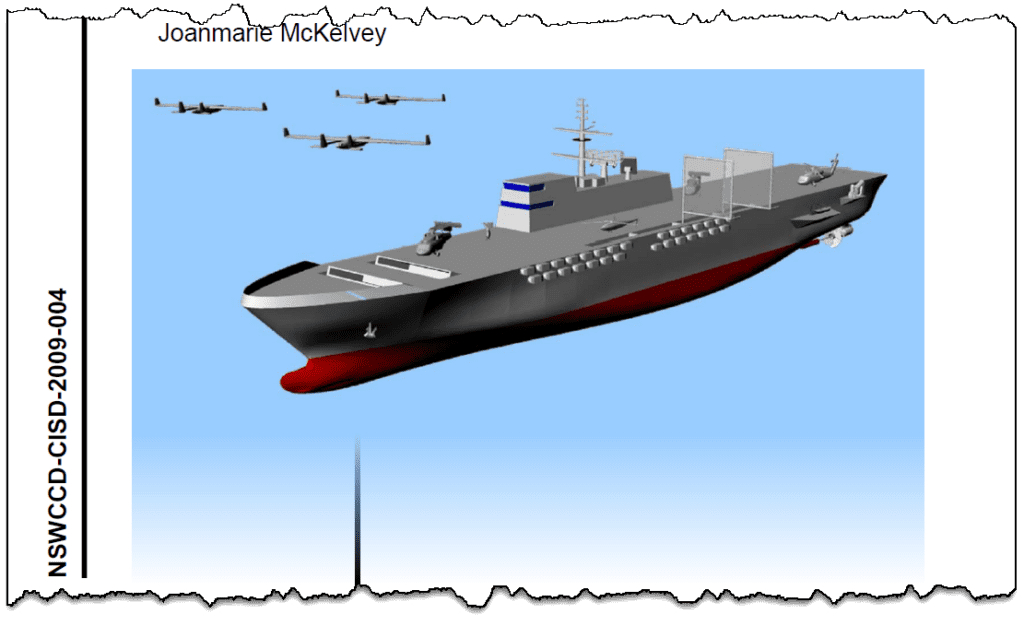In a detailed report published by the Naval Surface Warfare Center Carderock Division, the concept of a “UAV Mothership” has been outlined, revealing a sophisticated design aimed at enhancing the U.S. Navy’s operational capabilities with Unmanned Aerial Vehicles (UAVs). This mothership concept is set to serve as a dedicated vessel for launching, recovering, and maintaining large swarms of UAVs, positioning itself as a crucial platform in modern naval warfare.
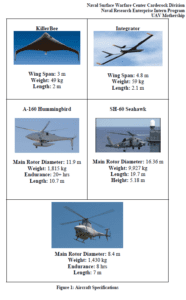 Revolutionary Concept for Unmanned Swarms
Revolutionary Concept for Unmanned Swarms
The most intriguing aspect of the report is the emphasis on the vessel’s ability to deploy “mass swarms” of UAVs. According to the document, the mothership is designed to handle up to 100 small fixed-wing UAVs, such as the Swift Killer Bee (KB4) and the Insitu Integrator, and ensure continuous surveillance through simultaneous operations. This swarm capability allows the mothership to cover extensive areas for intelligence gathering, anti-submarine warfare, search and rescue, and combat surveillance missions. The concept positions UAV swarms as a viable alternative to traditional manned aircraft, highlighting benefits in terms of reduced human risk, cost savings, and extended operational endurance.
The report states, “The US Navy is currently reevaluating its approach to combat surveillance by modeling the effectiveness of a UAV swarm and may conclude that a swarm is indeed the most effective strategy.”
Innovative Launch and Recovery Systems
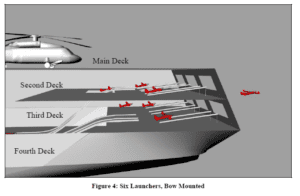 The report details an intricate launch and recovery mechanism designed for efficiency and reliability. Fixed-wing UAVs will be launched using a compressed air system adapted from existing land-based models, positioned on the vessel’s top deck to avoid challenges like bow slamming in rough seas. This configuration allows for the rapid deployment of a 50-UAV swarm within approximately 35 minutes using six launchers. “The top-mounted configuration was chosen because the final hull arrangement has a suitably long flight deck, which is low relative to the waterline,” the report explains.
The report details an intricate launch and recovery mechanism designed for efficiency and reliability. Fixed-wing UAVs will be launched using a compressed air system adapted from existing land-based models, positioned on the vessel’s top deck to avoid challenges like bow slamming in rough seas. This configuration allows for the rapid deployment of a 50-UAV swarm within approximately 35 minutes using six launchers. “The top-mounted configuration was chosen because the final hull arrangement has a suitably long flight deck, which is low relative to the waterline,” the report explains.
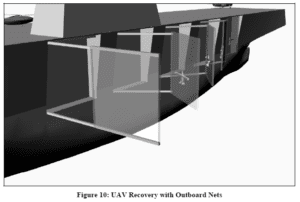 Equally noteworthy is the recovery system. The mothership utilizes catch nets that deploy from the flight deck, ensuring the safe recovery of UAVs even in challenging sea conditions (up to sea state 5). This feature allows continuous aerial surveillance, as the first swarm can be retrieved while a second swarm is deployed, providing round-the-clock operational capability. The report clarifies, “Safety and reliability were important objectives in the design of the recovery system; however, the same timeliness required for launching UAVs was not as important for recovery since the UAVs can stay airborne for up to 24 hours.”
Equally noteworthy is the recovery system. The mothership utilizes catch nets that deploy from the flight deck, ensuring the safe recovery of UAVs even in challenging sea conditions (up to sea state 5). This feature allows continuous aerial surveillance, as the first swarm can be retrieved while a second swarm is deployed, providing round-the-clock operational capability. The report clarifies, “Safety and reliability were important objectives in the design of the recovery system; however, the same timeliness required for launching UAVs was not as important for recovery since the UAVs can stay airborne for up to 24 hours.”
Multi-Mission Flexibility
Aside from UAVs, the mothership concept is also designed to support larger rotorcraft UAVs like the Boeing A-160 Hummingbird and the Northrop Grumman MQ-8 Fire Scout. The vessel can accommodate up to 12 of these larger UAVs, alongside five SH-60 Seahawk helicopters. The design features multiple helicopter landing pads, enabling the simultaneous launch and recovery of manned and unmanned rotorcraft, thus enhancing the ship’s versatility in various mission profiles.
To enable such extensive UAV and rotorcraft operations, the vessel is designed with a monohull structure, inspired by the LPD-17 hull form. This design choice was guided by considerations of stability, operational efficiency, and deck space, although future designs may explore alternative hull forms such as SWATH or trimaran for improved seakeeping.
Propulsion and Operational Endurance
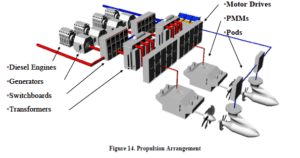 The UAV Mothership is engineered for long-range operations, boasting an electric propulsion system that provides a sustained speed of 22 knots and a range of 4,500 nautical miles. This system is powered by four Wartsila diesel generators, with energy distributed across the vessel to ensure redundancy and resilience. Notably, the propulsion setup includes hybrid contra-rotating pods, which offer better maneuverability and efficiency than conventional propeller systems. The report explains, “Naval tests have proven this system to be 6 to 15 percent more efficient than conventional types of propulsion. This form of propulsion is also very attractive because of redundancy and the low-speed maneuverability provided by the steerable pods.”
The UAV Mothership is engineered for long-range operations, boasting an electric propulsion system that provides a sustained speed of 22 knots and a range of 4,500 nautical miles. This system is powered by four Wartsila diesel generators, with energy distributed across the vessel to ensure redundancy and resilience. Notably, the propulsion setup includes hybrid contra-rotating pods, which offer better maneuverability and efficiency than conventional propeller systems. The report explains, “Naval tests have proven this system to be 6 to 15 percent more efficient than conventional types of propulsion. This form of propulsion is also very attractive because of redundancy and the low-speed maneuverability provided by the steerable pods.”
Developmental Risks and Future Exploration
The concept is not without its challenges. The report identifies several areas that require further research and development to ensure operational feasibility. For instance, the top-mounted recovery nets’ performance in rough sea conditions, as well as the reliability of fixed-wing UAV operations aboard the mothership, need to be extensively tested. Additionally, the use of podded propulsion systems, which are uncommon in current U.S. Navy vessels, poses challenges related to noise and magnetic signature reduction.
Another key concern is the assumption that Boeing’s A-160 Hummingbird can be modified with folding rotors for compact storage, a feature not present in the current design. “Additional analysis would need to be conducted into fields such as noise and magnetic signature reduction for pods to fulfill the mission of a US Naval combatant,” the report states, emphasizing the need for continued developmental efforts.
The original 2009 design may have been just a starting point, but it set the stage for a future where unmanned aerial systems dominate the skies above naval fleets. While the basic principles of the mothership concept remain relevant, one can only imagine how much more potent this platform would be today, leveraging cutting-edge technology that has since emerged. The 2009 vision of a UAV mothership was ambitious, but the technological advances of the past decade suggest that the U.S. Navy could now bring this concept to life in ways that were barely imaginable at the time.
Document Archive
 UAV Mothership, NSWCCD-CISD–2009/004 July 2009 [42 Pages, 1.6MB]
UAV Mothership, NSWCCD-CISD–2009/004 July 2009 [42 Pages, 1.6MB]
 Loading...
Loading...Follow The Black Vault on Social Media:

